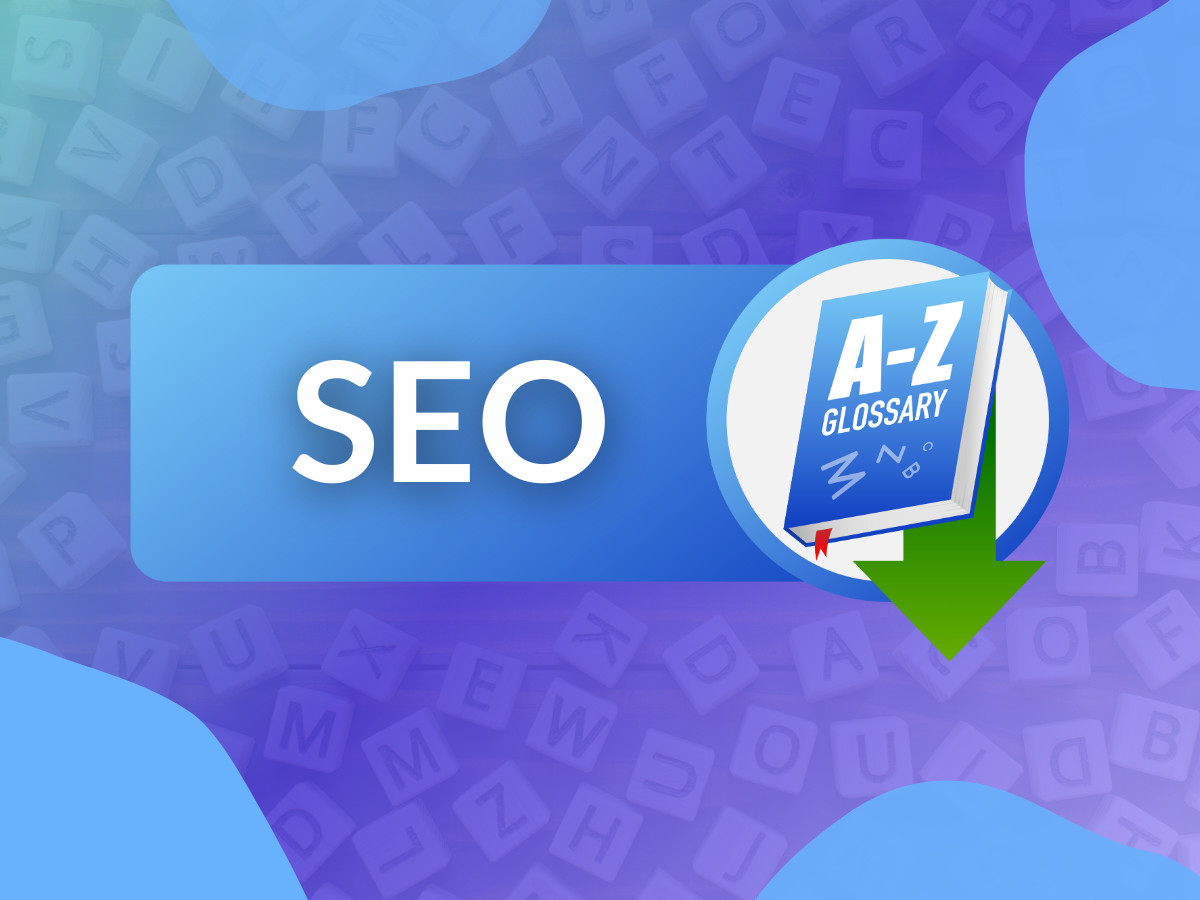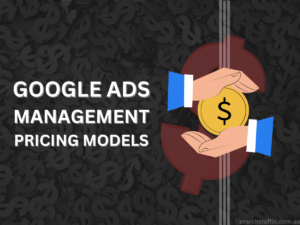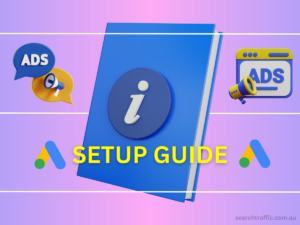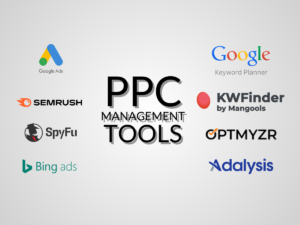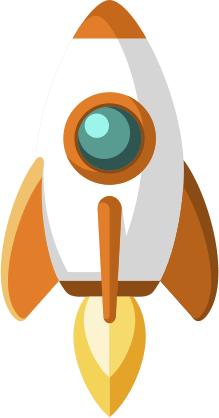Table of Contents
Ever felt overwhelmed by the maze of SEO terminology? You’re not alone, but there’s a way out—consider this your navigation guide.
“Mastering SEO: The Ultimate Glossary For Navigating The Landscape” is more than just a dictionary; it’s your insider guide to the intricate world of search engine optimisation.
We’ve curated and simplified the most essential SEO terms, empowering you to both understand the jargon and implement the strategies. Stick around, and you’ll emerge from this digital journey as a true expert in the field.
Glossary in SEO
Crawl
Crawl: In SEO, “crawl” refers to the automated scanning of the internet by search engine bots to discover and index new web pages. These bots also revisit previously indexed pages to check for updates. The crawling process is foundational in SEO, affecting how websites appear in organic search results. Effective crawling is facilitated by techniques such as optimising robots.txt files and using sitemaps, thereby impacting a site’s visibility and ranking.
Index
Index: In the realm of Search Engine Optimisation (SEO), an “index” is a comprehensive database maintained by search engines, containing all the web pages that have been discovered through the crawling process. This database is central to the functioning of search engines; when a user types in a query, the search engine scans its index to find relevant pages to display in the search results. Being included in this index is crucial for website visibility. Various SEO techniques, such as proper use of meta tags, generating quality content, and implementing effective site architecture, aim to ensure a website’s pages are not just crawled, but also successfully indexed.
Crawl Depth
Crawl Depth: This term specifies the extent to which search engine bots access and index pages on a website during a single crawl session. High crawl depth means a majority of a site’s pages are crawled and indexed, enhancing the site’s visibility in search engine results. On the other hand, a low crawl depth indicates that many pages on the site may remain unindexed for extended periods, potentially reducing its search visibility. Crawl depth is influenced by factors such as site architecture, internal linking, and the robots.txt file, making it a key consideration in SEO strategies.
Google Search Console (GSC)
Google Search Console: A web service offered by Google, this tool enables website owners to monitor the indexing status of their web pages and improve site visibility. It provides a range of functionalities, including tracking website performance in Google Search, examining indexing issues, and submitting sitemaps. By offering valuable insights into how Google views a website, Google Search Console is an essential resource for SEO practitioners aiming to optimize site performance and troubleshoot potential issues.
Google Merchant Centre (GMC)
Google Merchant Center: This is a platform that allows businesses to upload and manage store and product data for display across various Google services. While not directly an SEO tool, its functionality complements SEO efforts by enhancing the visibility of products in search results, especially in Google Shopping. Through Google Merchant Center, retailers can submit detailed product feeds, manage how their items appear online, and align their digital storefront with Google’s ecosystem to reach a broader audience.
Spider
Spider: Also known as a search engine bot or simply a bot, this software crawler performs the crucial function of scanning the internet to collect data for search engine indexes. It evaluates various elements like HTML code, broken links, orphan pages, and key terms to determine a page’s relevance and quality. Additionally, it tracks traffic to the site and individual pages. These spiders are fundamental to SEO, as their activity dictates which web pages appear in search engine results and how they are ranked.
Site Map
Site Map: This is a page or set of pages that provide a roadmap of a website by linking to every accessible page. Serving as a navigational aid for users, a site map also aids search engine spiders in efficiently crawling and indexing the website’s content. Properly implemented site maps can improve the accuracy and speed of the crawling process, thereby enhancing the website’s SEO performance.
Head Term
Head Term: A head term, also known as a head keyword, is a keyword that attracts high search volume. These terms are highly competitive, making them challenging to rank for in search engine results. They are the antithesis of long-tail keywords, which are more specific and less competitive. While head terms can bring substantial traffic, the competition often requires significant SEO investment to achieve top rankings.
Longtail Keyword
Long-Tail Keywords: These are search queries that consist of three or more words and are usually highly specific. Unlike head terms, which are broad and attract high search volume, long-tail keywords are more targeted. They often have lower search volume but can yield higher conversion rates due to their specificity. Long-tail keywords are generally easier to rank for and are an essential part of a balanced SEO strategy, complementing the more competitive head terms.
Above The Fold
Above The Fold: This term refers to the content that is immediately visible on a web page without requiring the user to scroll down. In the context of web design and SEO, “above the fold” content is crucial because it’s the first thing users see when they land on a page. Therefore, it often includes key information, calls-to-action, and important visual elements designed to engage the user. Optimising this area is essential for both user experience and SEO performance.
Below The Fold
Below The Fold: Originating from newspaper terminology where the physical fold of the paper separated content, this term now refers to the part of a webpage that is not immediately visible and requires scrolling to access. While not as immediately impactful as “above the fold” content, the “below the fold” section is still essential for user engagement and SEO. It often contains supplementary information, additional calls-to-action, and can contribute to the overall user experience and time spent on the page, which can indirectly influence SEO metrics.
Accelerated Mobile Page (AMP)
AMP: Short for “Accelerated Mobile Pages,” AMP is an open-source framework initiated by Google and other industry stakeholders. It enables the creation of mobile websites that load with near-instantaneous speed. By simplifying the HTML, CSS, and JavaScript components, AMP aims to improve the mobile browsing experience dramatically. This fast loading time is not only beneficial for user engagement but also has positive implications for SEO, as page speed is a known ranking factor for Google’s search algorithm.
Analytics
Analytics: This term encompasses the collection, measurement, and analysis of data related to the performance of digital marketing channels and websites. Analytics tools provide insights into user behaviour, traffic sources, engagement metrics, and more. This data is crucial for making informed decisions in SEO strategies, as it allows for the optimization of content, improved user experience, and better alignment with business objectives. Analytics is foundational in gauging the effectiveness of various SEO tactics and for plotting future digital marketing efforts.
Domain Authority/Domain Rating
Domain Authority/Domain Rating: These are metrics, ranging from 1 to 100, used to gauge a website’s potential ranking power in organic search results. Originated by Moz for Domain Authority and by Ahrefs for Domain Rating, these scores offer an estimate of how authoritative a website domain is viewed by search engines. A higher score denotes greater authority, which generally translates to improved search engine ranking potential. While not official metrics used by search engines, they serve as useful benchmarks in SEO efforts for assessing the competitiveness and authority of a domain.
Backlink
Backlink: This is an incoming hyperlink from one web page to another website. When a site gains a link from an external site, a certain amount of reputation or “link juice” is transferred. Backlinks are pivotal for SEO as they serve as endorsements, implying that the linked content is credible or valuable. The quality, quantity, and relevance of backlinks can significantly influence a website’s domain authority and its ranking in search engine results. Therefore, acquiring high-quality backlinks is often a key focus in SEO strategies.
Local Citations
Local Citations: In the context of local SEO, citations are references to a business’s name, address, and phone number (NAP) found on websites other than the business’s own site. These mentions serve as a form of validation for search engines, indicating that the business exists and operates in the stated location. Citations can come from various platforms such as directories, social media, and local business websites. Consistency in NAP information across various platforms is crucial, as inconsistencies can negatively impact local search rankings.
Featured Snippet
Featured Snippet: These are concise excerpts of content from web pages, automatically extracted by Google, and displayed prominently in search results to provide quick answers to user queries. Featured snippets aim to offer immediate, accurate information, often negating the need for users to click through to the source website. While they can significantly boost visibility, they can also potentially reduce the number of clicks to the website. Nonetheless, earning a featured snippet is often a sought-after goal in SEO strategies due to the high level of exposure it provides.
Googlebot
Googlebot: Known by various names like ‘crawler,’ ‘robots,’ or ‘search engine spider,’ Googlebot is Google’s mechanism for discovering new and updated web pages. It plays a crucial role in indexing and updating Google’s search database. The efficiency of Googlebot’s work can be impacted by site issues such as broken links, redirect loops, or duplicate pages, making it harder for the bot to crawl and index the site effectively. Therefore, optimising a website for smooth Googlebot activity is essential in SEO to ensure accurate and timely indexing.
Google Trend
Google Trends: This is a tool that showcases the popularity of specific search terms within Google’s search engine. It measures the frequency with which a term is entered into the search field, relative to the total search volume over a selected time frame. Google Trends also offers insights into the search volume index and the geographical locations of the users making those searches. Utilised correctly, Google Trends can be a valuable asset in SEO for understanding user behaviour, seasonal trends, and emerging topics, thereby aiding in content strategy and keyword selection.
Information Architecture (IA)
Information Architecture (IA): This refers to the organisation and structure of a website, encompassing elements like page structure, navigation levels, user pathways, and page URLs. IA aims to create a user-friendly and logical layout, facilitating easy navigation and effective content discovery. Well-implemented information architecture can significantly improve user experience and engagement, which indirectly contributes to better SEO performance. A poorly designed IA, on the other hand, can hinder site usability and make it challenging for search engine crawlers to index the website effectively.
No Follow Links
No Follow Links: In the context of SEO, “nofollow” is an HTML attribute that can be added to links to signal search engine bots not to follow them. This command can be placed either in the head section of a web page or within the code of individual links. When a “nofollow” attribute is applied, it instructs search engine spiders not to pass any “link juice” or PageRank to the linked page, effectively discrediting it as a backlink. This is often used to control the flow of site authority, to prevent association with spammy or untrusted sites, or to comply with advertising and sponsored content guidelines.
Robots.txt
Robots.txt: In the scope of SEO, a “robots.txt” file serves as a directive placed in the root directory of a website. Its primary purpose is to manage and restrict the actions of search engine bots or spiders as they crawl the website. By specifying which parts of the website should or should not be accessed, the robots.txt file helps optimise the crawling process. It can be a crucial tool for guiding search engine bots away from sensitive or irrelevant areas of a site, thereby improving the site’s SEO performance. Mastery of robots.txt is essential for ensuring that search engines index your website’s content effectively.
Rich Snippets
Rich Snippets: These are enhanced search result listings that display additional information beyond the standard title, URL, and description. Created through extra HTML markup added to a website’s code, rich snippets categorise specific pieces of content, making it easier for search engines to understand and present them. Types of rich snippets include ratings, product prices, or publication dates, among others. Rich snippets aim to improve user experience by providing more informative search results, and they can positively impact click-through rates, thereby benefiting SEO performance.
Sitelinks
Sitelinks: These are additional links displayed beneath the main search result for a website in Google’s search listings. Organic sitelinks guide users to important or relevant pages within the website, facilitating quicker and easier navigation. By doing so, they improve the overall user experience and can also boost the site’s click-through rate. Organic sitelinks are automatically generated by Google based on algorithms, and their presence serves as an indicator of a well-structured and authoritative website, thereby offering SEO benefits.
User-Generated Content (UGC)
User-Generated Content (UGC): Refers to any form of content, such as reviews, testimonials, recommendations, or discussions, that is created by users rather than by the brand or entity itself. This content is typically produced by a brand’s online audience or customers and can offer authentic insights, perspectives, or endorsements. UGC is invaluable for businesses as it fosters community engagement, builds trust, and can positively influence purchasing decisions. Its organic nature also offers SEO advantages, adding freshness to a website and potentially expanding keyword reach.
Meta Title
Meta Title: This is the title of a web page, specified within the HTML code using title tags, usually denoted as <title>Your Page Title Here</title>. Search engines index meta titles and display them as clickable headlines in search results. Because of their visibility and role in informing both users and search engines about the content of a page, meta titles are a crucial element in SEO. Optimising your meta title to include targeted keywords can significantly impact your page’s ranking and click-through rates.
Meta Description
Meta Description: This is an HTML attribute contained within the meta tags of a web page. It provides a brief summary of the page’s content and may appear beneath the clickable headline in search engine results. Though search engines sometimes choose to display a snippet from the page’s main content instead, a well-crafted meta description can still influence click-through rates and user engagement. It serves as a brief pitch that informs potential visitors about what the page offers, making it an important element in SEO strategy. Optimising the meta description to include relevant keywords can enhance its effectiveness.

